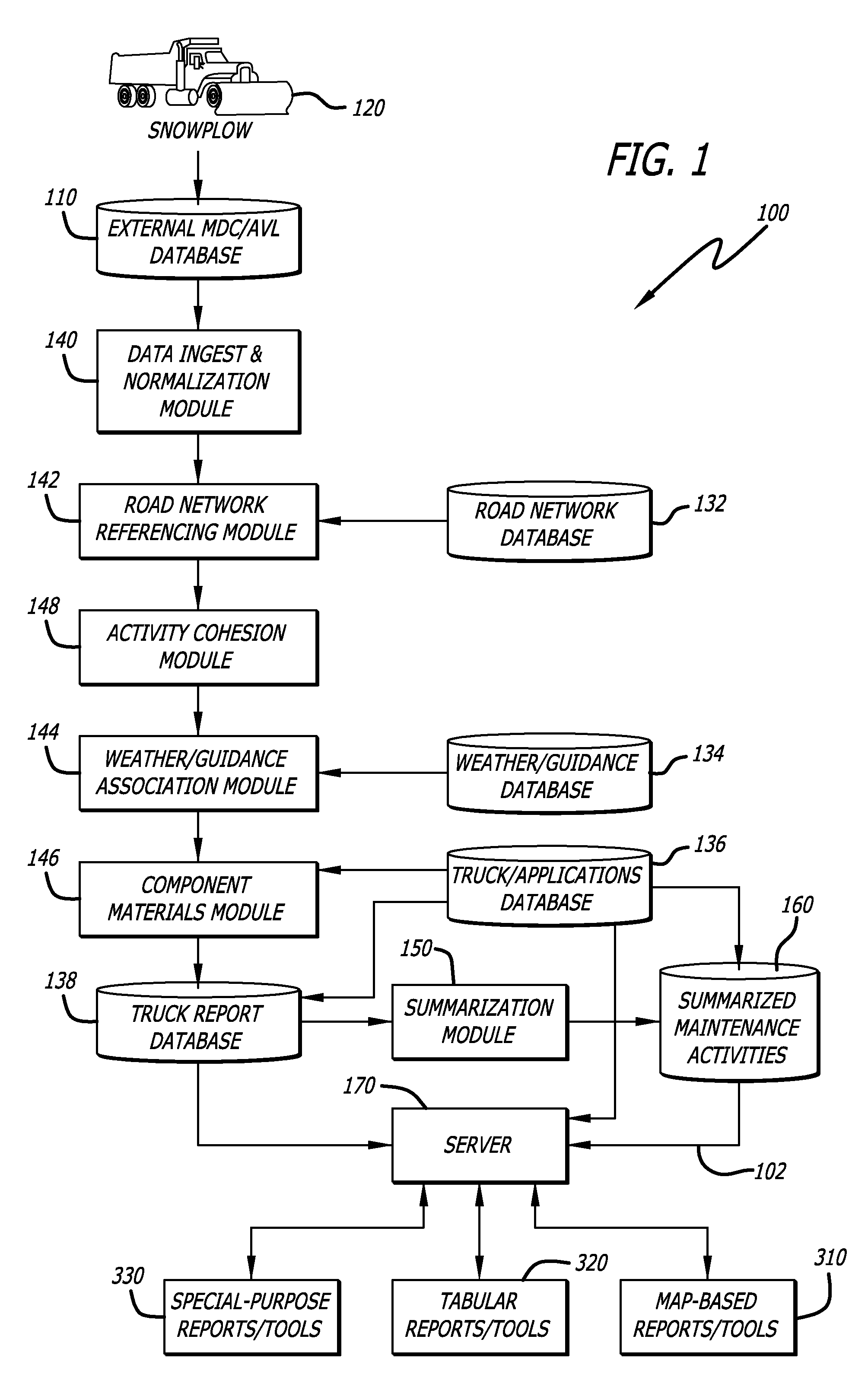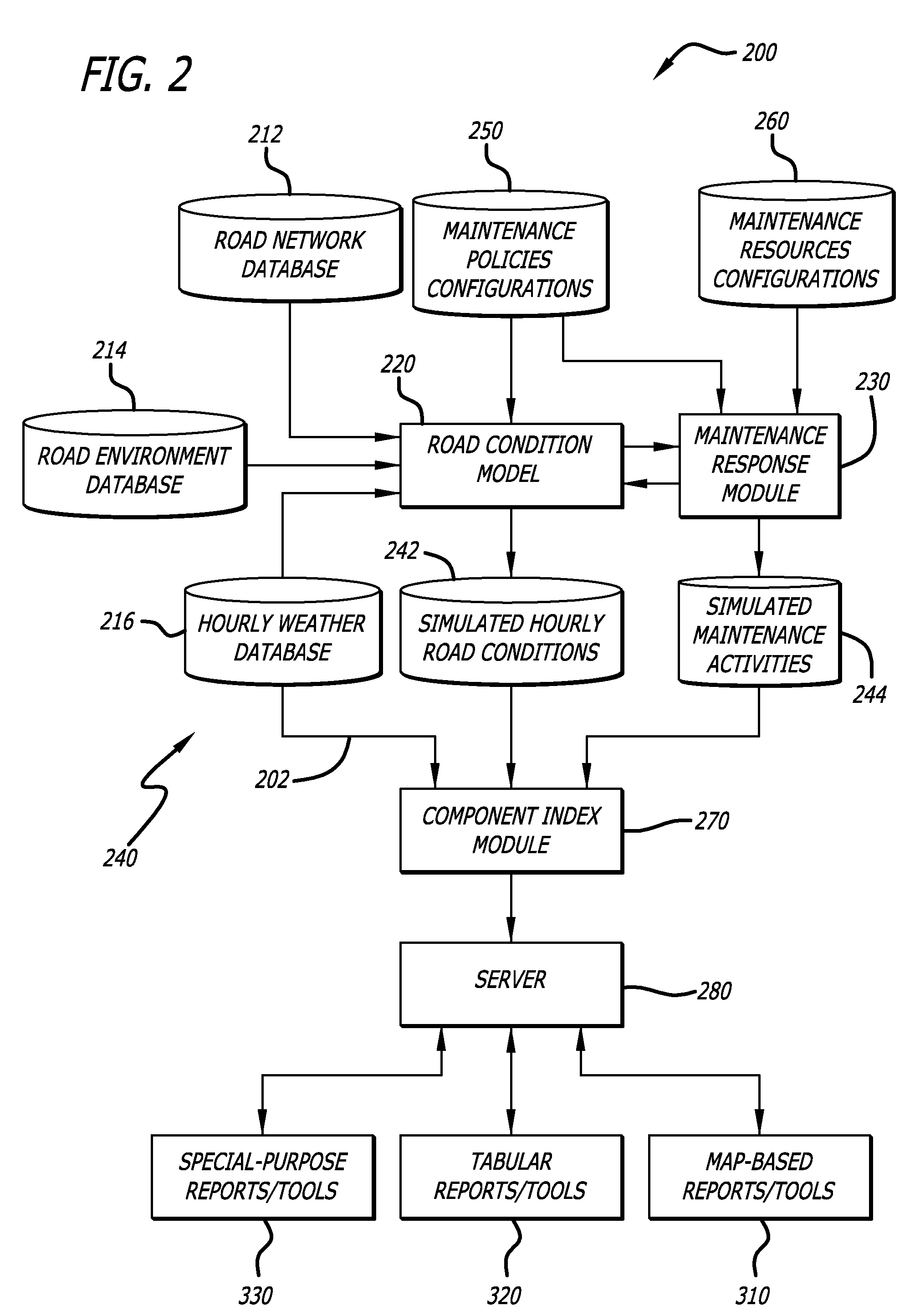Management tools for quantification and simulation of performance and outcome of winter transportation infrastructure maintenance activities
a technology for transportation infrastructure and management tools, applied in the direction of instruments, analogue processes for specific applications, electric/magnetic computing, etc., can solve the problems of inability to measure and normalize the effectiveness of winter maintenance activities, the quantity of resources used, and the inability to measure the effectiveness and efficiency of winter maintenance operations, so as to improve the effect of understanding and improving the ability to evaluate performan
- Summary
- Abstract
- Description
- Claims
- Application Information
AI Technical Summary
Benefits of technology
Problems solved by technology
Method used
Image
Examples
Embodiment Construction
[0028]In the following description of the present invention reference is made to the accompanying figures which form a part thereof, and in which is shown, by way of illustration, exemplary embodiments illustrating the principles of the present invention and how it is practiced. Other embodiments will be utilized to practice the present invention and structural and functional changes will be made thereto without departing from the scope of the present invention.
[0029]Many agencies and entities responsible for winter transportation infrastructure maintenance collect data from weather maintenance vehicles, often using mobile / maintenance data collection and automated vehicle location systems, known in the industry together as MDC / AVL systems. These utilize global positioning systems (GPS) and on-board data logging and / or transmission capabilities to provide instantaneous GPS-tagged reports of winter maintenance vehicle activities (e.g., plow position(s), material applications, etc.) an...
PUM
 Login to View More
Login to View More Abstract
Description
Claims
Application Information
 Login to View More
Login to View More - R&D
- Intellectual Property
- Life Sciences
- Materials
- Tech Scout
- Unparalleled Data Quality
- Higher Quality Content
- 60% Fewer Hallucinations
Browse by: Latest US Patents, China's latest patents, Technical Efficacy Thesaurus, Application Domain, Technology Topic, Popular Technical Reports.
© 2025 PatSnap. All rights reserved.Legal|Privacy policy|Modern Slavery Act Transparency Statement|Sitemap|About US| Contact US: help@patsnap.com



